The Art and Science of Professional Headlight Restoration
Table of Contents
Introduction
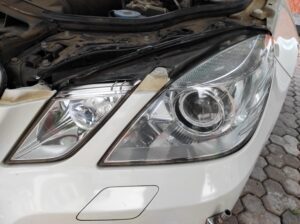
Clear and well-maintained headlights are not only essential for safe driving but also contribute to the overall aesthetics of a vehicle. Over time, the plastic lenses of headlights can become cloudy, yellowed, or oxidized due to exposure to UV rays, road debris, and environmental factors. This deterioration not only diminishes the appearance of the vehicle but also reduces the effectiveness of the headlights, compromising visibility and safety on the road.
The Importance of Clear Headlights
Clear headlights play a vital role in ensuring safe driving conditions, especially at night or in adverse weather conditions. Foggy or discolored headlights can significantly reduce visibility, making it difficult for the driver to see and be seen by other vehicles. This impaired visibility can lead to accidents and potential hazards on the road.
In addition to safety concerns, cloudy or yellowed headlights can give the vehicle an aged and neglected appearance. As one of the most noticeable features of a car, headlights contribute to its overall aesthetic appeal. Restoring the clarity of the headlights can enhance the look of the vehicle, giving it a fresh and well-maintained appearance.
The Art and Science of Professional Headlight Restoration
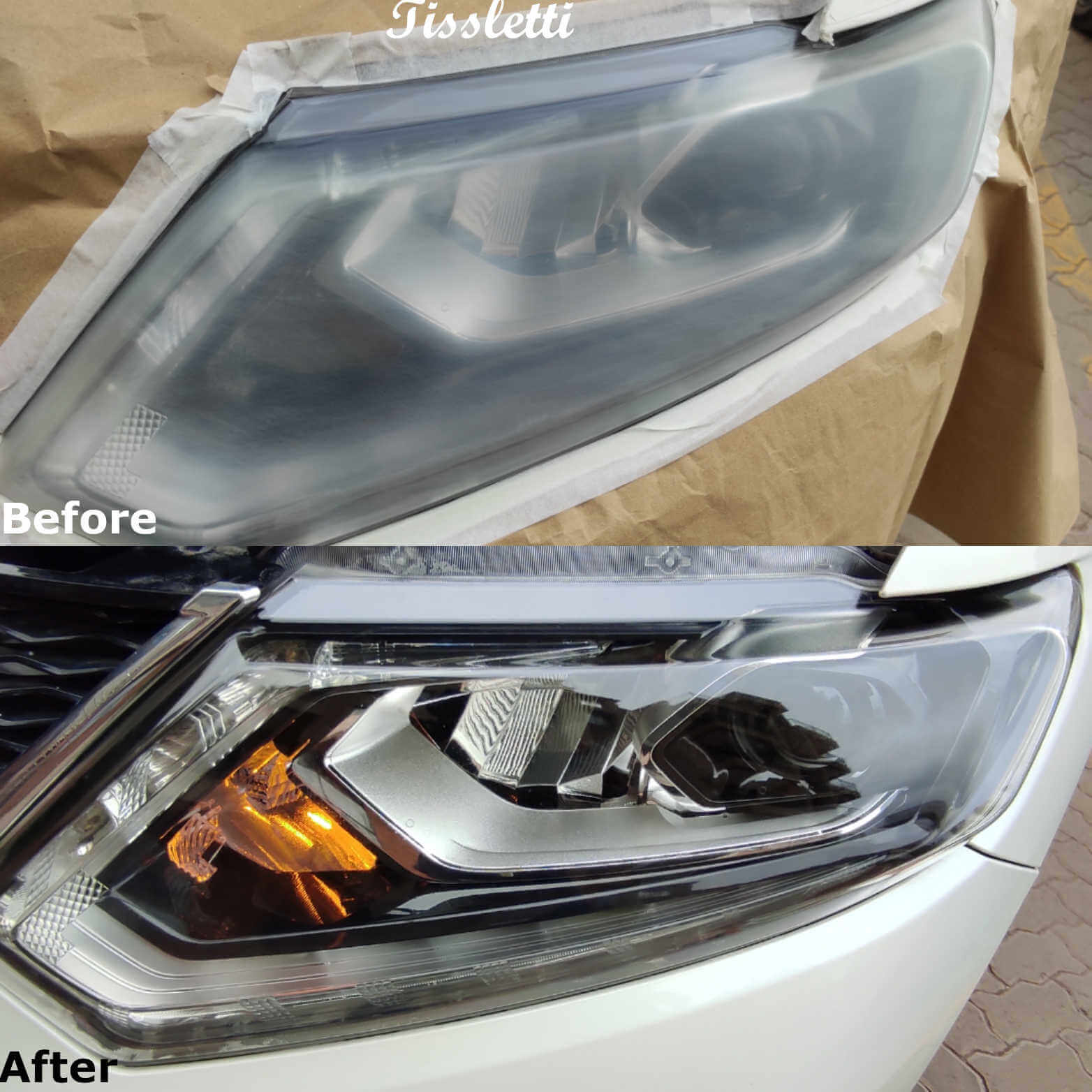
Trained technicians proficient in the nuances of headlight maintenance offer a specialized service: professional headlight restoration. These experts employ a combination of techniques and high-quality products to restore the clarity and functionality of the headlights.
The restoration process typically involves several steps. The technician starts by thoroughly cleaning the headlights to remove dirt, grime, and other contaminants. Then, using specialized tools and techniques, they carefully remove the damaged outer layer of the headlight lens, which often contains oxidation and other surface imperfections.
Once the damaged layer is removed, the technician proceeds to polish the lens, using professional-grade compounds and polishing pads. This step helps eliminate any remaining hazy or dull areas, restoring the lens to its original clarity. Finally, a protective sealant or coating is applied to the lens to enhance durability and protect against future damage from UV rays and environmental factors.
Benefits of Professional Headlight Restoration
1. Enhanced Safety: Restoring the clarity of headlights improves visibility on the road, ensuring that the driver can see obstacles, pedestrians, and other vehicles clearly. This, in turn, reduces the risk of accidents and enhances overall safety.
2. Cost-Effective: Professional headlight restoration is often a more economical option compared to replacing the entire headlight assembly. By restoring the existing headlights, vehicle owners can save money while achieving similar results.
3. Aesthetic Appeal: Clear and well-maintained headlights enhance the overall appearance of the vehicle. Restored headlights give the car a fresh and polished look, boosting its visual appeal and potentially increasing its resale value.
4. Environmental Sustainability: Choosing headlight restoration over replacement contributes to environmental sustainability by reducing waste. Instead of discarding old headlights, restoration extends their lifespan and reduces the need for new manufacturing.
5. Time Efficiency: Professional headlight restoration is typically a quick process that can be completed in a relatively short amount of time. This allows vehicle owners to enjoy the benefits of clear headlights without significant disruption to their daily routine.
In conclusion, professional headlight restoration is a valuable service that combines the art and science of bringing clarity and safety back to vehicle headlights. By entrusting their headlights to trained technicians, car owners can enjoy improved visibility, enhanced aesthetics, and a cost-effective solution that contributes to a safer driving experience.
Why Professional Headlight Restoration Matters
The Consequences of Deteriorating Headlights
As time goes by, the headlights of a vehicle can undergo deterioration due to various factors such as UV exposure, road debris, and environmental elements. This deterioration manifests as cloudy or yellowed lenses, reducing the clarity of the headlights. The consequences of deteriorating headlights are far-reaching and can significantly impact both safety and legal aspects.
1. Reduced Visibility: Cloudy or yellowed headlights diminish the amount of light emitted, impairing the driver’s visibility during nighttime driving or in adverse weather conditions. This reduced visibility not only compromises the driver’s ability to see the road ahead but also affects their visibility to other motorists, increasing the risk of accidents.
2. Safety Risks: Clear visibility is paramount when it comes to safe driving. Deteriorated headlights can obscure obstacles, pedestrians, and other vehicles on the road, making it challenging to react promptly and avoid potential collisions. Inadequate illumination from headlights can also affect the driver’s depth perception and peripheral vision, further compromising safety.
3. Potential Legal Issues: Many jurisdictions have regulations regarding the condition and performance of vehicle headlights. Deteriorated headlights that do not meet legal requirements may result in citations, fines, or even vehicle impoundment. It is essential for vehicle owners to maintain their headlights in proper working condition to comply with these regulations and ensure road legality.
The Benefits of Professional Restoration Compared to DIY Methods
While some vehicle owners may attempt to restore their headlights using do-it-yourself (DIY) methods, opting for professional headlight restoration offers several distinct advantages.
1. Expertise and Experience: Professional technicians possess specialized knowledge and experience in headlight restoration. They understand the intricacies of different headlight materials and can identify the most effective techniques and products for restoration. Their expertise ensures optimal results and minimizes the risk of damage to the headlights during the restoration process.
2. High-Quality Results: Professionals utilize professional-grade equipment, compounds, and sealants that are designed explicitly for headlight restoration. These superior products can effectively remove oxidation, discoloration, and surface imperfections, restoring the headlights to their original clarity and functionality. The outcome is a long-lasting restoration that surpasses the results typically achieved through DIY methods.
3. Time and Convenience: Headlight restoration can be a time-consuming process, particularly for those with limited experience. By opting for professional restoration, vehicle owners can save valuable time and effort. Professional technicians efficiently perform the restoration, allowing owners to focus on other priorities without compromising the quality of the results.
4. Cost-Effectiveness: While DIY kits may appear to be cost-effective initially, they often provide temporary or subpar results. This can lead to repeated restoration attempts or even the need for headlight replacement, ultimately incurring higher expenses. Professional restoration, on the other hand, offers a cost-effective solution by providing long-lasting results that eliminate the need for frequent rework or replacement.
Exploring the Expertise and Techniques Used by Professionals in Headlight Restoration
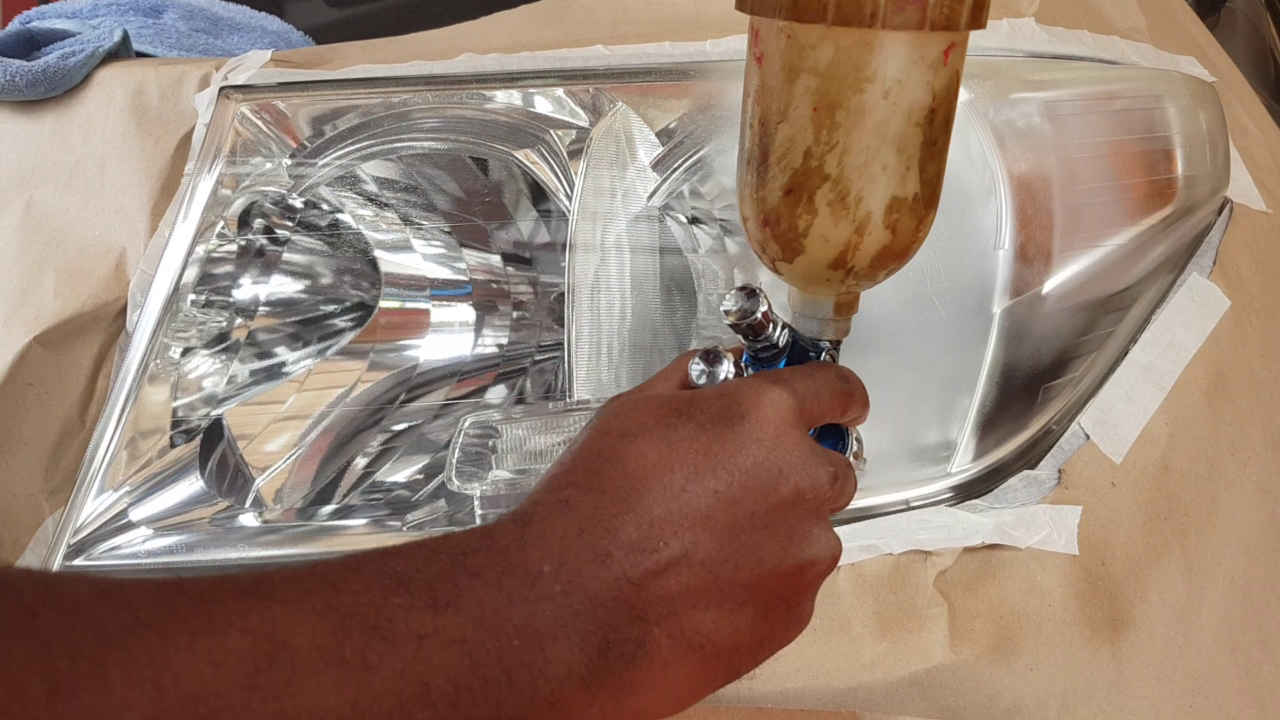
Professional headlight restoration is a comprehensive process that combines expert techniques and specialized tools to achieve optimal results. The following are some of the expertise and techniques employed by professionals:
1. Thorough Inspection: Professionals conduct a detailed inspection of the headlights to assess the extent of damage and determine the most appropriate restoration approach. This evaluation helps identify any underlying issues that may affect the restoration process.
2. Cleaning and Preparation: Prior to restoration, the headlights are thoroughly cleaned to remove dirt, grime, and other contaminants. This ensures that the restoration process is performed on a clean surface, maximizing the effectiveness of subsequent restoration steps.
3. Wet Sanding: In cases of severe oxidation or surface damage, professionals may employ wet sanding techniques using progressively finer grits of sandpaper. Wet sanding removes the damaged outer layer of the headlight lens, providing a smooth and clean surface for subsequent restoration steps.
4. Polishing and Compounding: Professionals use high-quality compounds and polishing pads to remove any remaining haze, scratches, or imperfections on the headlight lens. This step restores the clarity and shine of the headlights, enhancing both their appearance and functionality.
5. UV Protection: To ensure long-lasting results, professionals apply a UV-resistant sealant or coating to the restored headlights. This protective layer shields the lenses from further UV damage, discoloration, and deterioration caused by environmental factors.
In conclusion, professional headlight restoration matters due to the significant consequences of deteriorating headlights on visibility, safety, and potential legal issues. Choosing professional restoration over DIY methods offers distinct benefits, including expertise, high-quality results, time savings, and cost-effectiveness. By exploring the techniques and expertise employed by professionals, vehicle owners can make an informed decision to restore their headlights to their optimal condition.
Understanding the Headlight Restoration Process
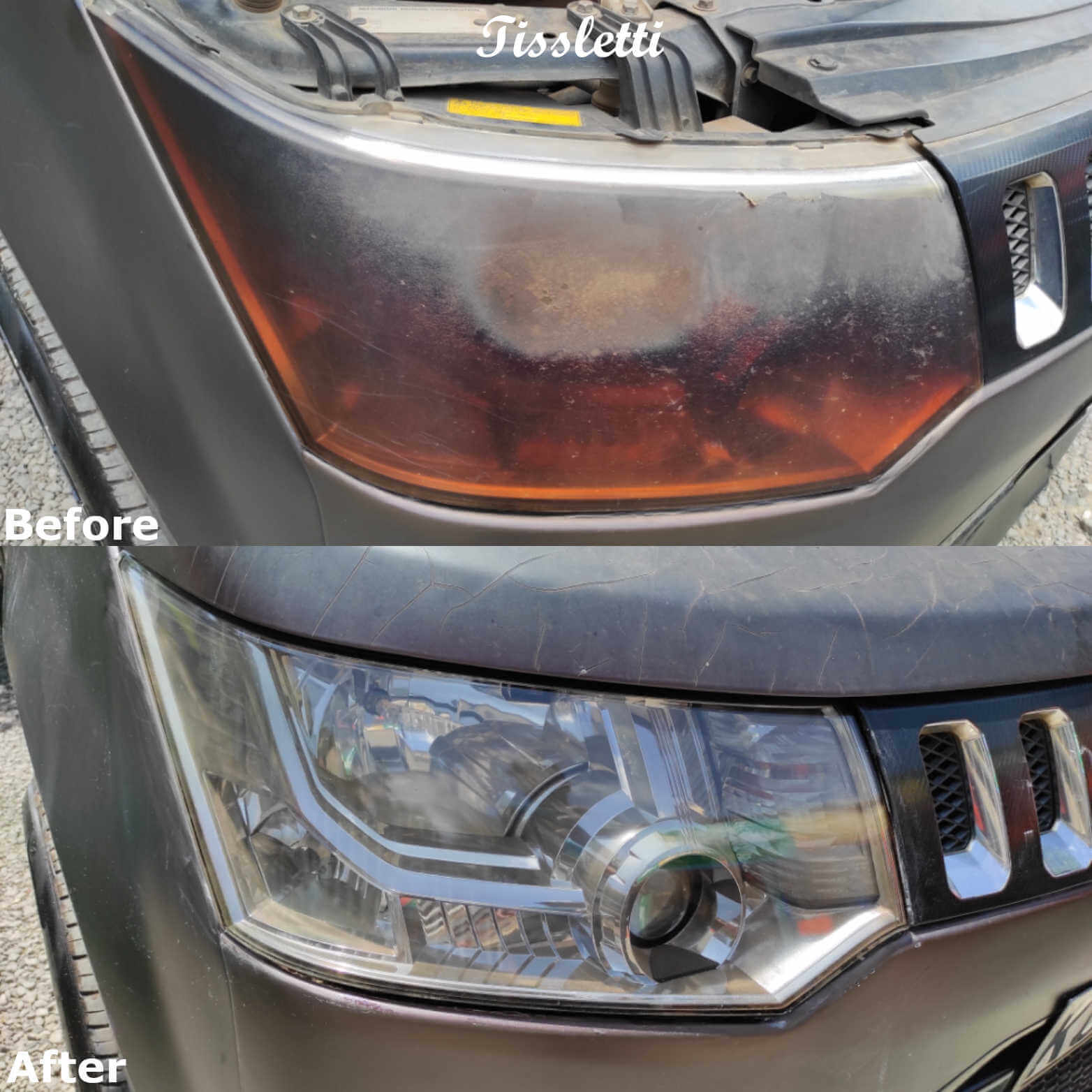
When it comes to restoring the clarity and functionality of headlights, a systematic process is followed by professionals to achieve optimal results. Understanding the step-by-step approach can help vehicle owners grasp the intricacies involved in the headlight restoration process.
Step 1: Inspection and Assessment of Headlight Condition
Before diving into the restoration process, the first crucial step is to thoroughly inspect and assess the condition of the headlights. This inspection helps professionals identify the extent of damage, whether it’s surface-level oxidation, yellowing, hazing, or scratches. By carefully examining the headlights, technicians can determine the most suitable restoration approach and the specific techniques and products required for each case.
Step 2: Preparing the Headlights for Restoration
Once the inspection is complete, the next step is to prepare the headlights for restoration. This involves cleaning the headlights to remove dirt, grime, and any existing debris that might interfere with the restoration process. Proper cleaning ensures that the subsequent restoration steps are performed on a clean surface, maximizing their effectiveness. Technicians use specialized cleaning agents and tools to provide a thorough and meticulous cleaning process.
Step 3: Wet-Sanding or Abrasive Techniques to Remove Damaged Layers
In cases where the headlights exhibit severe oxidation, surface damage, or deep scratches, wet-sanding or other abrasive techniques may be employed. Wet-sanding involves using progressively finer grits of sandpaper along with a lubricant to gently remove the damaged layers from the headlight lens. This process eliminates the imperfections and restores a smooth surface, preparing the headlights for the next restoration steps. Technicians with expertise in this technique carefully control the sanding process to ensure the preservation of the lens integrity.
Step 4: Polishing to Restore Clarity and Remove Imperfections
After the wet-sanding or abrasive process, the headlights are ready for polishing. Polishing is a crucial step in restoring the clarity and removing any remaining imperfections on the headlight lens. Professionals use specialized polishing compounds and pads to carefully buff the lens, effectively removing haze, scratches, and other blemishes. This process restores the headlight’s original shine and improves light transmission, enhancing both the appearance and functionality of the headlights.
Step 5: Applying a Protective Sealant or Coating for Long-Lasting Results
To ensure long-lasting results, the final step involves applying a protective sealant or coating to the restored headlights. This sealant acts as a barrier, protecting the lens from future oxidation, UV damage, and environmental factors that can lead to deterioration. The protective layer also enhances the headlight’s resistance to scratches and helps maintain the restored clarity and shine for an extended period.
By following these meticulous steps, professionals in headlight restoration are able to revitalize and rejuvenate headlights, bringing them back to their original condition. Understanding the process can help vehicle owners appreciate the expertise and techniques employed by professionals in restoring the clarity, safety, and aesthetics of their headlights.
Factors Affecting Headlight Restoration
Headlight restoration is not just a one-size-fits-all process. Several factors come into play that can affect the restoration outcomes and the longevity of the results. Understanding these factors can help vehicle owners make informed decisions and take necessary precautions to maintain their restored headlights.
The Role of Headlight Materials and Lens Types
The type of material used in manufacturing headlights and the lens composition can significantly impact the restoration process. Different materials, such as polycarbonate, glass, or acrylic, have varying properties that can influence their susceptibility to degradation and the effectiveness of restoration techniques. Additionally, the lens design, whether smooth or textured, can also affect the restoration approach. Professionals in headlight restoration possess the knowledge and expertise to identify the specific characteristics of different headlight materials and lenses, allowing them to choose the appropriate methods for optimal results.
Understanding the Causes of Headlight Degradation and Damage
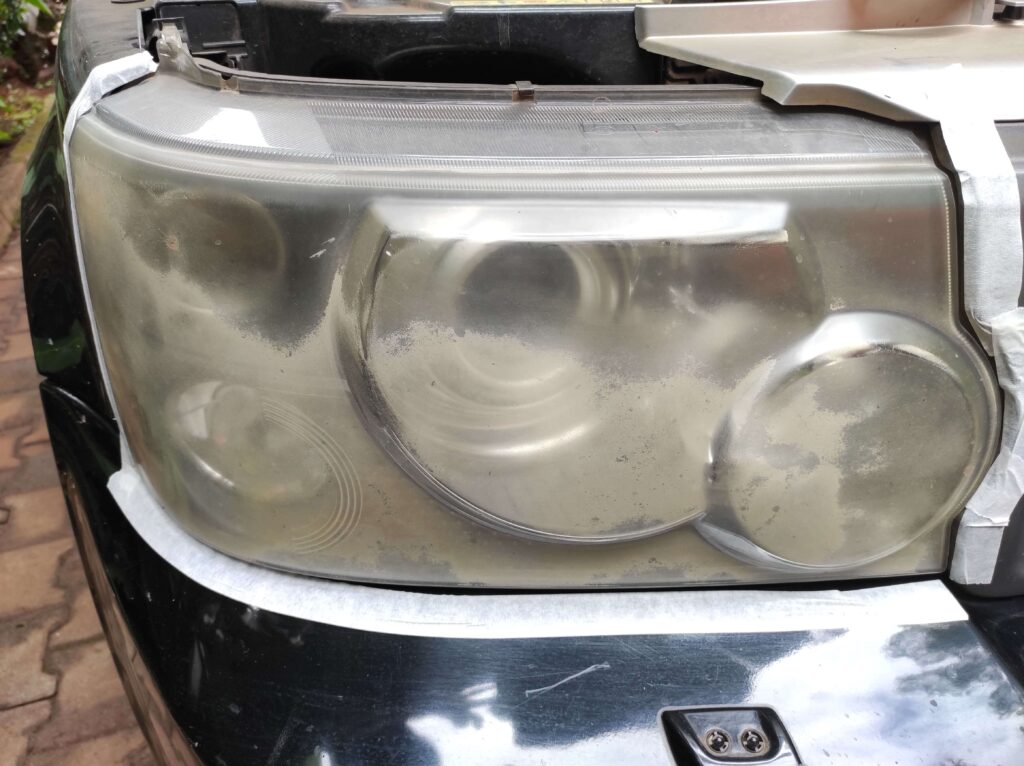

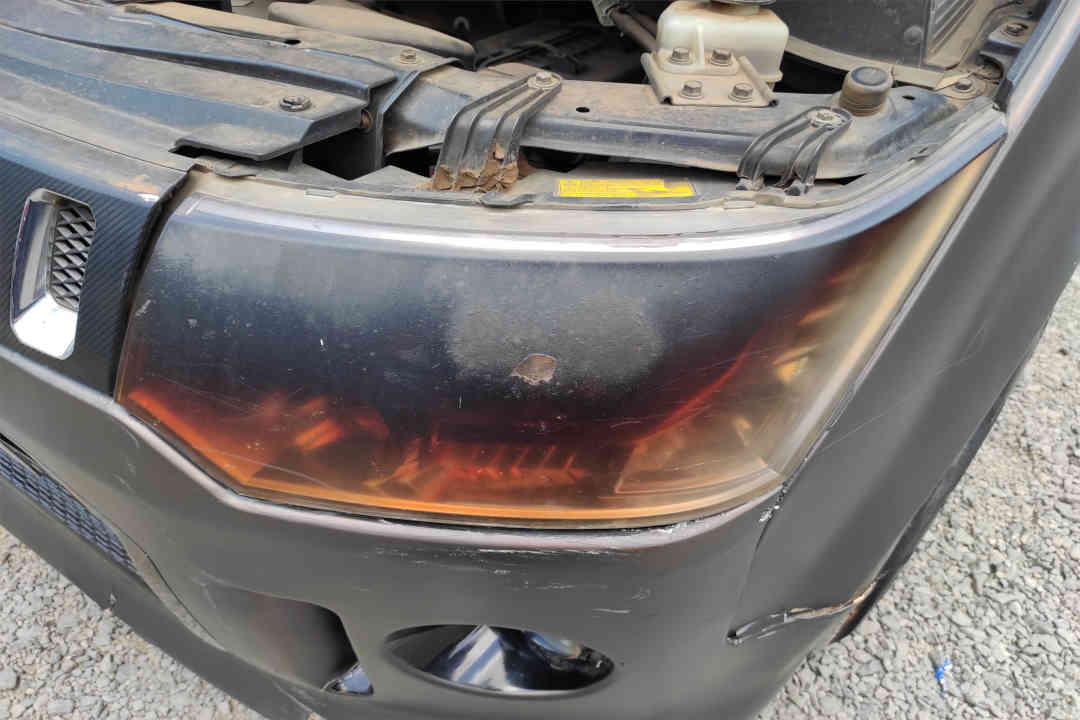
To comprehend the restoration process fully, it’s crucial to be aware of the causes behind headlight degradation and damage. Over time, exposure to environmental factors, including UV radiation, heat, moisture, and road debris, can take a toll on headlights. Oxidation, yellowing, hazing, and the formation of scratches are common issues that affect headlight clarity and performance. Understanding these causes helps professionals develop effective restoration strategies that target the root problems and address them comprehensively.
Environmental Factors and Preventive Measures for Maintaining Restored Headlights
Even after undergoing professional restoration, headlights can still be susceptible to future degradation if not properly maintained. Environmental factors play a significant role in headlight deterioration. UV radiation from the sun, harsh weather conditions, chemicals, and contaminants on the road can all contribute to the reoccurrence of oxidation, yellowing, and other issues. To maintain the clarity and longevity of restored headlights, it’s essential to take preventive measures. Some effective strategies include:
1. Regular Cleaning: Clean the headlights periodically using mild soap and water to remove dirt, grime, and contaminants that can accumulate on the surface.
2. Protective Coatings: Apply a high-quality UV-resistant protective coating to the restored headlights. These coatings act as a barrier, shielding the lenses from UV radiation, oxidation, and environmental elements.
3. Parking in Shade: Whenever possible, park the vehicle in shaded areas or use a car cover to reduce exposure to direct sunlight and minimize UV damage.
4. Avoid Harsh Chemicals: Refrain from using harsh chemicals or abrasive cleaners on the headlights, as they can strip away the protective coatings and accelerate deterioration.
5. Regular Inspection: Conduct periodic inspections of the headlights to identify any signs of degradation or damage. Early detection allows for timely maintenance and restoration to prevent further deterioration.
By considering these environmental factors and implementing preventive measures, vehicle owners can extend the lifespan of their restored headlights and enjoy optimal clarity and visibility for a longer duration.
Understanding the factors that influence headlight restoration empowers vehicle owners to make informed decisions, select appropriate restoration techniques, and take proactive measures to maintain the clarity and functionality of their headlights. With the right knowledge and proper care, restored headlights can continue to enhance safety and aesthetics on the road.
DIY vs. Professional Headlight Restoration

Restoring headlights is a task that many vehicle owners face when they notice reduced clarity and performance. While there are numerous DIY headlight restoration kits available on the market, opting for professional restoration services can offer distinct advantages. In this section, we’ll explore the pros and cons of DIY kits, the reasons to choose professional restoration and the cost considerations associated with professional services.
Pros and Cons of DIY Headlight Restoration Kits
Pros
1. Affordability: DIY kits are often more affordable compared to professional restoration services, making them an attractive option for budget-conscious individuals.
2. Convenience: DIY kits can be easily purchased and used at home, eliminating the need for scheduling appointments or visiting a professional service provider.
3. Immediate Availability: DIY kits are readily available in stores and online, allowing vehicle owners to start the restoration process promptly.
Cons
1. Limited Effectiveness: DIY kits may provide temporary results and fail to address deep oxidation, scratches, or other severe headlight damage effectively.
2. Skill and Knowledge Requirements: Achieving professional-level results with DIY kits requires proper technique, skill, and understanding of the restoration process. Inexperienced users may not achieve the desired outcomes.
3. Time and Effort: DIY restoration can be time-consuming and labor-intensive, especially for those unfamiliar with the process. It may involve multiple steps, including sanding, polishing, and applying protective coatings.
Reasons to Choose Professional Restoration over DIY Methods
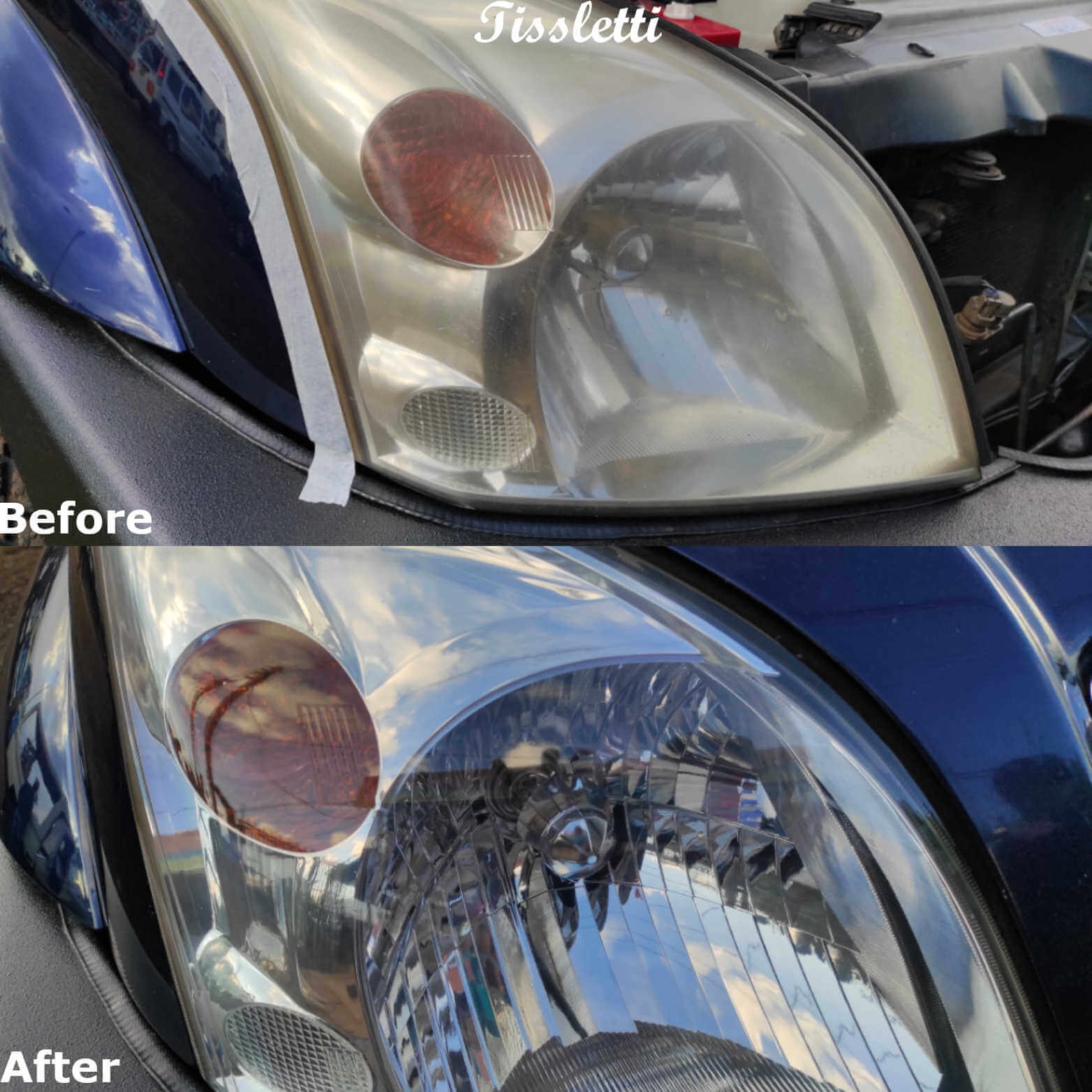
1. Expertise and Experience: Professional restoration technicians have the expertise and experience to assess the condition of headlights accurately and determine the most appropriate restoration techniques. They possess in-depth knowledge of different headlight materials and lens types, allowing them to tailor the restoration process to achieve optimal results.
2. Advanced Techniques and Equipment: Professionals utilize advanced techniques, specialized tools, and professional-grade equipment to restore headlights. They have access to high-quality products that deliver superior results and long-lasting clarity.
3. Comprehensive Restoration: Professional restoration goes beyond surface-level improvements. Experts can address deep oxidation, scratches, and other damages that DIY kits may overlook. They employ a systematic approach that involves thorough cleaning, sanding, polishing, and applying protective coatings to ensure headlights regain their original clarity and aesthetics.
4. Time and Convenience: Opting for professional restoration saves valuable time and effort. Vehicle owners can leave the restoration process in the hands of experts, allowing them to focus on other tasks or activities.
Cost Considerations and Value for Money in Professional Services
While professional restoration services may come with a higher upfront cost compared to DIY kits, it’s important to consider the long-term value and benefits they provide. Factors to consider include:
1. Durability: Professional restoration often yields more durable results, ensuring the headlights stay clear and functional for an extended period. This reduces the frequency of restoration and the associated costs over time.
2. Time and Convenience: The time saved by opting for professional services can be valuable. Additionally, the convenience of having the restoration done by experts who handle all the necessary steps efficiently is worth considering.
3. Guarantees and Warranties: Many professional restoration services offer guarantees or warranties, providing peace of mind and assurance that the job will be done to a high standard. This ensures that if any issues arise, they can be resolved without additional costs.
Choosing professional restoration over DIY methods offers several benefits, including superior results, expertise, time savings, and long-term durability. While DIY kits may seem appealing from a cost perspective, the value and quality of professional services make them a worthwhile investment for those seeking the best restoration outcomes for their headlights.
Finding Professional Headlight Restoration Services

When it comes to restoring your headlights, entrusting the job to a professional can ensure optimal results and save you time and effort. However, finding the right professional restoration service requires careful consideration. In this section, we’ll explore the steps you can take to find reputable restoration providers, evaluate customer reviews, consider essential factors, and request accurate estimates.
Researching and Selecting Reputable Restoration Providers
1. Online Search: Begin your search for professional headlight restoration services by conducting an online search. Look for providers in your local area and explore their websites to gather information about their services, experience, and expertise.
2. Ask for Recommendations: Reach out to friends, family, or colleagues who have recently had their headlights restored. Recommendations from trusted individuals can help you find reliable restoration providers.
3. Check Business Directories: Utilize online business directories that list professional services in your area. These directories often provide essential details such as contact information, customer ratings, and reviews.
Evaluating Customer Reviews and Testimonials
1. Review Websites: Visit review websites and online platforms dedicated to customer feedback, such as Google Reviews, Yelp, or Angie’s List. Read through the experiences shared by previous customers to gauge the quality and satisfaction level of the restoration services provided.
2. Testimonials: Many professional restoration providers feature testimonials on their websites. Take the time to read these testimonials to gain insights into the experiences of their past clients and the results they achieved.
3. Social Media Presence: Check the social media profiles of restoration providers to see if they engage with customers and respond to inquiries or concerns. Positive interactions and a strong online presence can indicate their commitment to customer satisfaction.
Factors to Consider When Choosing a Professional Restoration Service
1. Experience and Expertise: Look for restoration services with a proven track record and extensive experience in the field. Consider their specialization and whether they have worked with your specific vehicle make and model.
2. Certifications and Training: Determine if the restoration technicians are certified and trained in the latest techniques and industry best practices. This ensures they have the necessary skills to handle your headlights with care and precision.
3. Quality of Materials: Inquire about the quality of materials and products used during the restoration process. Reputable providers will use high-quality polishes, sealants, and protective coatings to ensure long-lasting results.
4. Customer Service: Assess the level of customer service provided by the restoration service. Friendly and knowledgeable staff who address your inquiries promptly and professionally contribute to a positive overall experience.
5. Mobile Services: If convenience is important to you, inquire whether the restoration service offers mobile services. Mobile restoration allows the professionals to come to your preferred location, saving you time and effort.
6. Warranties and Guarantees: Check if the restoration service provides any warranties or guarantees for their work. A reliable service provider will stand behind their craftsmanship and offer reassurance regarding the longevity of the restoration.
Requesting Estimates
1. Initial Consultation: Contact the restoration providers you are interested in and schedule an initial consultation. During this consultation, discuss the condition of your headlights and any specific concerns you have. A professional will be able to provide an initial assessment and outline the scope of the restoration process.
2. Detailed Estimates: Request detailed estimates from multiple restoration providers. The estimates should include the cost breakdown, restoration techniques to be employed, and the expected timeline for completion.
3. Clarify Any Questions: If you have any questions or concerns regarding the estimates, don’t hesitate to reach out to the providers for clarification. Understanding the scope of the restoration process and the services included in the estimate is crucial for making an informed decision.
By following these steps, you can find reputable and skilled professionals who specialize in headlight restoration. Take the time to research, evaluate customer reviews, consider essential factors, and request accurate estimates. With the right professional service, you can restore your headlights to their original clarity and ensure enhanced visibility and safety on the road.
Maintenance and Care for Restored Headlights
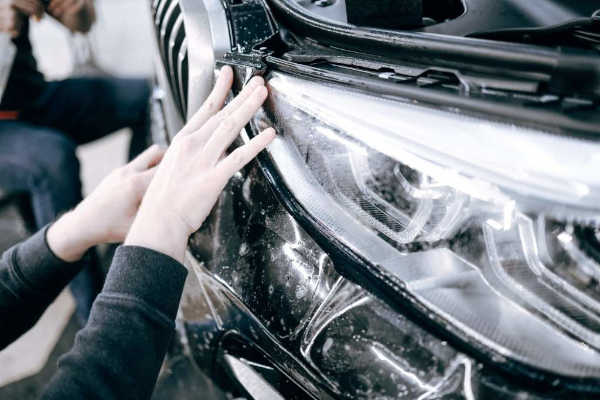
After investing in professional headlight restoration, it’s important to implement proper maintenance and care to ensure the longevity and optimal performance of your restored headlights. In this section, we will explore effective practices and techniques to help you extend the lifespan of your headlights and keep them looking their best.
Best Practices for Extending the Lifespan of Restored Headlights
1. Protective Coatings: Consider applying a protective coating or sealant specifically designed for headlights. These coatings act as a barrier against UV rays, oxidation, and environmental contaminants, helping to maintain the clarity and integrity of the headlight surface.
2. Garage or Covered Parking: Whenever possible, park your vehicle in a garage or covered area to shield the headlights from prolonged exposure to sunlight, rain, and other harsh weather conditions. This can significantly reduce the rate of degradation and discoloration.
3. Avoid Chemical Exposure: Refrain from using strong chemicals or abrasive cleaners on your restored headlights, as they can strip away the protective coatings and damage the lens surface. Opt for gentle cleaning methods specifically formulated for automotive plastics.
Cleaning Techniques and Products to Preserve Clarity and Shine
1. Regular Cleaning: Clean your headlights regularly to remove dirt, debris, and road grime that can accumulate over time. Use a soft microfiber cloth or a sponge along with a mild automotive soap to gently wipe the surface of the headlights.
2. Polishing: Periodically polish the restored headlights to maintain their clarity and shine. Choose a non-abrasive headlight polish and apply it according to the manufacturer’s instructions. Polishing can help remove minor scratches and imperfections, restoring the headlight’s luster.
3. UV Protection: Apply a dedicated UV protectant specifically designed for headlights. These products provide an additional layer of defense against harmful UV rays, preventing yellowing and hazing caused by prolonged sun exposure.
Regular Inspections and Professional Maintenance Recommendations
1. Routine Inspections: Regularly inspect your restored headlights for any signs of discoloration, haziness, or damage. Catching issues early on allows for timely maintenance and prevents further deterioration.
2. Professional Maintenance: Consider scheduling periodic professional maintenance for your headlights. Professional technicians have the expertise and specialized tools to perform thorough inspections, identify potential problems, and provide the necessary repairs or maintenance to keep your headlights in top condition.
3. Bulb Replacement: If you notice a decrease in headlight brightness or uneven illumination, it may be an indication that the bulbs need replacement. Consult your vehicle’s manual or seek professional assistance to ensure you choose the correct bulbs for your specific headlight assembly.
By following these maintenance and care practices, you can protect your restored headlights and keep them looking clear and vibrant for an extended period. With regular inspections, gentle cleaning techniques, and the use of appropriate protective products, you can enjoy optimal visibility and enhance the overall appearance of your vehicle.
Frequently Asked Questions (FAQs) about Professional Headlight Restoration
As professional headlight restoration becomes increasingly popular, it’s natural to have questions about the process, its effectiveness, and the costs involved. In this section, we address some of the most frequently asked questions about professional headlight restoration and provide you with comprehensive answers to help you make informed decisions.
Conclusion
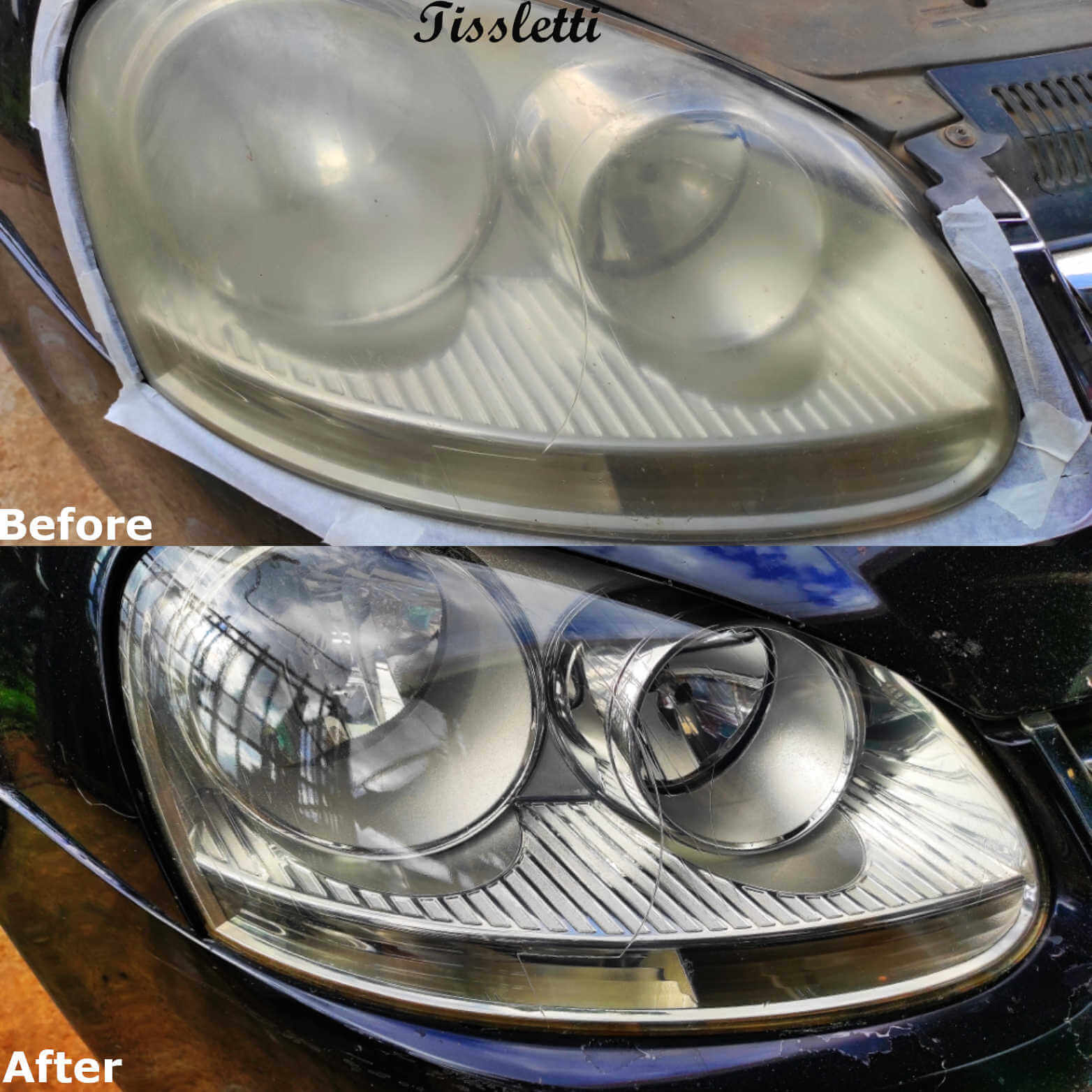
In conclusion, professional headlight restoration is a valuable service that offers numerous benefits for both safety and vehicle aesthetics. Let’s recap the main points covered in this article and highlight why you should consider professional restoration for your headlights.
Throughout the article, we have emphasized the importance of clear headlights for ensuring optimal visibility on the road, reducing safety risks, and avoiding potential legal issues. We explored the process of professional headlight restoration, including the inspection and assessment of headlight condition, the preparation steps, the techniques used for removing damaged layers and restoring clarity, and the application of a protective sealant for long-lasting results.
We also discussed the factors that can affect headlight degradation and damage, such as headlight materials, lens types, and environmental factors. Understanding these factors can help you take preventive measures and maintain the restored headlights in the best possible condition.
Additionally, we compared professional headlight restoration to DIY methods, highlighting the pros and cons of each approach. While there are DIY alternatives available, professional restoration offers superior results, longer-lasting effects, and the expertise of trained technicians who use specialized tools and techniques.
When choosing a professional restoration service, we advised researching and selecting reputable providers, evaluating customer reviews and testimonials, and considering factors such as mobile services and warranties. These considerations ensure that you receive high-quality service and optimal value for your investment.
As a call to action, we encourage you to take action and prioritize the maintenance of your headlights. If you prefer professional restoration, schedule an appointment with a trusted service provider to benefit from their expertise and restore your headlights to their optimal condition. Alternatively, if you feel confident in your DIY skills, explore the appropriate methods and products to improve the clarity and appearance of your headlights.
In closing, maintaining clear headlights is not just a matter of aesthetics but also a crucial aspect of vehicle safety and maintenance. By investing in professional headlight restoration or utilizing DIY methods effectively, you contribute to safer road conditions and ensure the longevity of your headlights. Take the necessary steps to enhance your driving experience and keep your vehicle looking its best.
Remember, clear headlights illuminate the path ahead, ensuring a safe and enjoyable journey for you and everyone on the road.